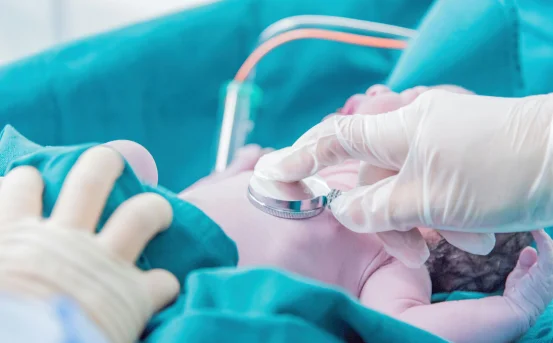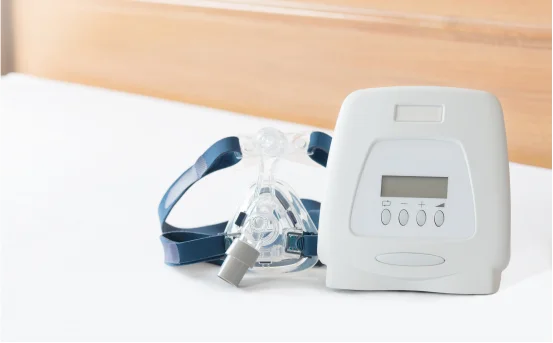We rarely think about the inside of our mouths until something feels “off.” A sore spot, a strange patch, or a lump might be easy to ignore at first. But when such issues don’t heal or start changing over time, your doctor or dentist may recommend an oral biopsy. This minor procedure can offer major insights into what’s happening beneath the surface.
An oral biopsy involves removing a small portion of tissue from the mouth or surrounding areas to examine it under a microscope. While this may sound daunting, it’s a straightforward and often painless way to diagnose a wide range of conditions from harmless growths to early-stage cancers..
What Is an Oral Biopsy?
An oral biopsy is a surgical diagnostic procedure used to evaluate abnormal tissue in the mouth. It can help identify:
- Benign lesions
- Precancerous or cancerous growths
- Chronic infections
- Autoimmune or inflammatory conditions
- Non-healing ulcers
The biopsy involves collecting a small piece of suspicious tissue, usually under local anesthesia. The sample is then sent to a pathology lab, where it’s examined by a specialist who looks for abnormal cell structure or disease indicators.
Reasons For Oral Biopsy Surgery
- Persistent Mouth Ulcers or Sores
Everyone experiences mouth sores from time to time due to biting, spicy foods, stress, or irritation. However, if a sore doesn’t heal within two to three weeks, it’s no longer “normal.”
Persistent ulcers could indicate:
- Chronic trauma (from sharp teeth, braces, or dentures)
- Viral infections (like herpes simplex)
- Fungal infections (oral candidiasis)
- Oral cancer or precancerous changes
When conservative treatment fails or the ulcer appears suspicious, an oral biopsy is crucial to identify what’s really going on.
- Chronic trauma (from sharp teeth, braces, or dentures)
- Red, White, or Mixed Color Patches
Leukoplakia (white patches) and erythroplakia (red patches) are common triggers for oral biopsy.
These patches may appear on the:
- Tongue
- Inner cheeks
- Gums
- Floor of the mouth
- Roof of the mouth
While many of these are harmless and caused by smoking or irritation, some of them carry a high risk of turning cancerous, especially erythroplakia. A biopsy helps in identifying cellular changes at an early, treatable stage.
- Tongue
- Lumps, Nodules, or Swellings
Feeling a lump or growth inside your mouth that wasn’t there before? Even if it’s painless, it needs attention.
These might be:
- Cysts
- Fibromas (benign fibrous tissue)
- Mucoceles (mucus-filled cysts)
- Salivary gland tumors
- Oral cancer
Biopsies help determine if the lump is benign or if further treatment or removal is necessary.
- Cysts
- Chronic Pain or Burning Without a Clear Cause
Sometimes, patients experience ongoing burning sensations or pain in a specific area of the mouth even if there’s no visible sore. In such cases, doctors may suspect:
- Neuropathy (nerve irritation)
- Inflammatory conditions
- Autoimmune disorders (like lichen planus or pemphigus)
- Hidden tissue changes
A biopsy can offer clarity, especially if medication and oral care do not help.
- Neuropathy (nerve irritation)
- Tissue That Changes Over Time
Have you noticed that a patch, bump, or sore in your mouth is changing in shape, size, or color? That’s a red flag. Changes in oral tissue could mean cell abnormality, especially if the lesion becomes:
- Thicker
- Harder
- More discolored
- More irregular in shape or borders
This is a textbook case where your doctor will suggest a biopsy to rule out dysplasia or cancer.
- Thicker
- Gum or Bone Changes Around Teeth
Teeth that become loose without trauma or show signs of bone loss in X-rays may be due to tumors or chronic infections affecting the jawbone. Oral biopsy is often used to investigate:
- Periodontal lesions that don’t respond to treatment
- Suspicious bone loss patterns
- Changes in gum tissue unrelated to gum disease
Sometimes, dentists discover suspicious tissue during tooth extraction or root canal therapy and send it for biopsy to be cautious.
- Periodontal lesions that don’t respond to treatment
- Numbness, Tingling, or Loss of Sensation
Losing sensation in your lips, cheeks, gums, or tongue isn’t normal especially if it happens without injury or dental work. This could signal pressure on a nerve from an underlying lesion.
A biopsy might be required to determine:
- If there is a growth pressing on a nerv
- Whether infection or inflammation is spreading
- If early-stage malignancy is affecting nearby tissue
- If there is a growth pressing on a nerv
- Diagnosing Infections or Autoimmune Diseases
Certain infections like tuberculosis, syphilis, or deep fungal infections may first appear as oral lesions. Similarly, autoimmune conditions such as oral lichen planus, pemphigus vulgaris, or lupus can cause recurring ulcers or white striations in the mouth.
Biopsy confirms:
- The exact type of lesion
- The inflammatory pattern
- Whether the condition is localized or systemic
- The exact type of lesion
- Verifying Lesions Seen in Scans
Sometimes, a dentist or surgeon may find an unexpected mass or lesion during an X-ray, CT scan, or MRI even if the patient has no symptoms. If the lesion looks suspicious, a biopsy becomes necessary to find out whether it’s:
- A benign growth
- A cyst
- An early tumor
- A bone infection
This helps avoid delays in treatment or surgery.
- A benign growth
What Happens During an Oral Biopsy?
The biopsy process is typically performed under local anesthesia, and may take anywhere between 15 to 30 minutes. Here’s what to expect:
- Preparation :- The area is cleaned and numbed.
- Tissue Removal :- A small piece of tissue is removed using a scalpel or punch tool.
- Closure (if needed) :- Some biopsies require one or two dissolvable stitches.
- Lab Testing :- The sample is sent to a pathology lab for analysis.
- Results :- You’ll usually receive the report within 5 to 10 days.
After the biopsy, you may feel mild discomfort or sensitivity for a few days, but it usually heals quickly.
Why Early Detection Matters
Many oral conditions look similar at first but their consequences can be drastically different. For example:
- A red patch could be simple irritation or early oral cancer.
- A sore may be a minor ulcer or a sign of an autoimmune disorder.
- A painless lump could be harmless or the beginning of a tumor.
With a biopsy, doctors can stop guessing and start diagnosing. The earlier a condition is caught especially cancer the better the chances of recovery and less invasive treatment.
Conclusion
An oral biopsy might feel like a big step, but it’s actually a small procedure with potentially life-saving outcomes. If your doctor or dentist suggests one, it’s because they’re looking out for your long-term health.
Understanding the reasons for an oral biopsy such as non-healing sores, unusual patches, growths, or unexplained pain can help you take action sooner. When it comes to oral health, early testing is the key to early healing.
If you’ve been advised to get a biopsy, don’t panic ask questions, follow up regularly, and trust the process. It’s all part of making sure your smile and your health stay safe and strong.























